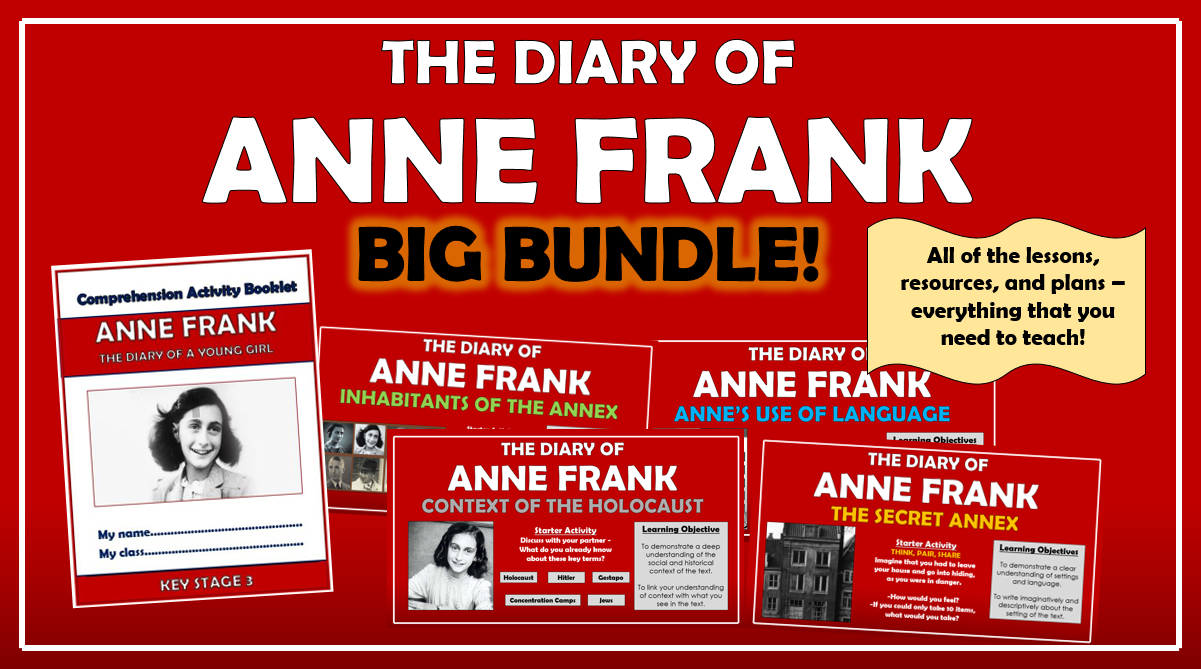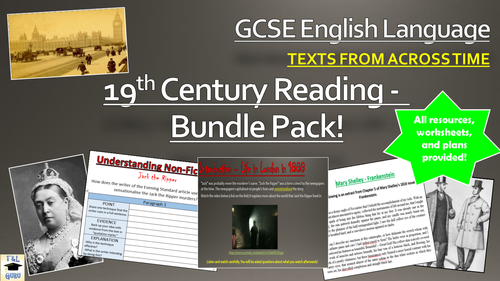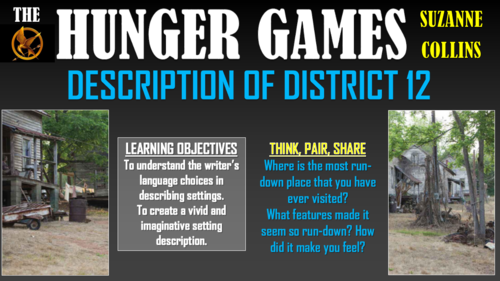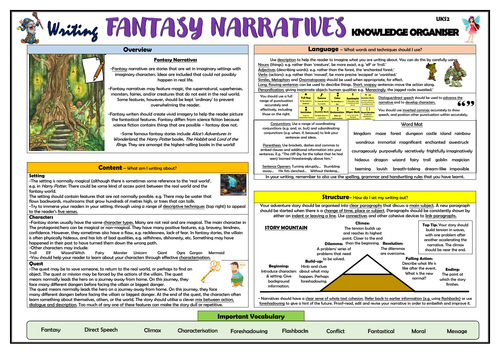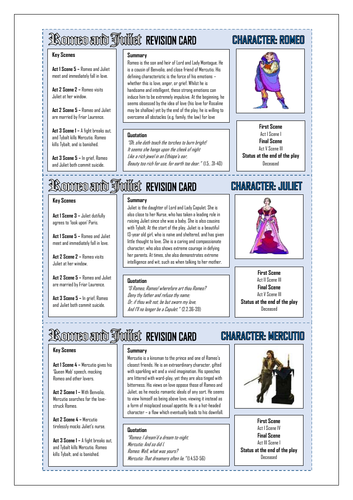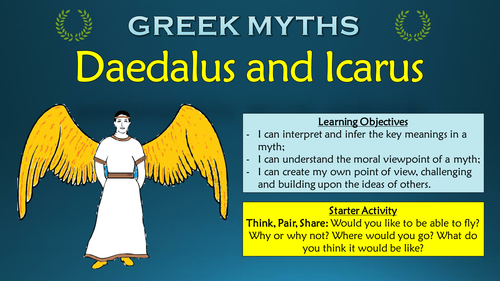
3k+Uploads
1929k+Views
2254k+Downloads
English language arts
Bundle Sale

The Curious Incident of the Dog in the Night-time - Lesson Bundle!
This engaging and thought-provoking series of lessons has been devised to provide students with a well-rounded, secure understanding of Mark Hatton’s 'The Curious Incident of the Dog in the Night-time.
The entire novel is broken down in to 7 double lesson packs, meaning that there is a total of 14 individual activity sets here.
The Opening Chapters (2-19);
Chapters 23 to 47
Chapters 53 to 83
Chapters 89 to 113
Chapters 127 to 157
Chapters 163 to 197
The End of the Novel (199 to 233).
The comprehensive and colourful PowerPoint presentations guide students through a wide range f activities, including those designed to enhance the following skills: retrieval, understanding vocabulary, inference, explanation, summarising, sequencing, analaysis and deeper thinking activities.
The lessons are suitable for students in either KS3 or KS4, depending upon the individual context of the school and students.
Bundle Sale

The Diary of Anne Frank Big Bundle!
THIS BUNDLE CONTAINS ALL OF THE ANNE FRANK LESSONS, IN ADDITION TO THE COMPREHENSION BOOKLET!
This engaging, varied, and informative scheme of learning is designed to help students gain understanding, assessment skills, and key interpretations of Anne Frank’s ‘Diary of a Young Girl.’ Made up of a wide-range of interesting and exciting lessons, students should complete this scheme having gathered vital skills in: interpreting the significant meanings of the text, understanding the writer’s ideas within the text, identifying the traits of key people and relationships, settings, and themes,understanding language devices, and relating the text to its social and historical context.
Stimulating, visual, and easily adaptable, these lessons provide suggested learning objectives and outcomes for students of a wide-range of abilities - The vast majority of tasks are differentiated to allow for different abilities and needs in your classroom. Each lesson loosely follows this logical learning journey to ensure that students learn in bite-size steps:
- Engaging
- Defining/ Understanding
- Identifying/Remembering
- Analysing/ Creating
- Peer or self evaluating.
All of the lessons are interactive, employ a variety of different teaching and learning methods and styles, and are visually-engaging. Resources, worksheets, and lesson plans are all provided.

Pigeon English - Comprehension Activities Booklet!
This resource booklet contains a wide range of age-appropriate, engaging, and meaningful comprehension activities for use throughout the reading of Stephen Kelman’s ‘Pigeon English.’ Teachers have found them particularly useful in exam revision, comprehension tasks, or guided reading sessions.
They are perfect for aiding the progress of students towards meeting the KS4 expectations within the National Curriculum framework - this makes the tasks suitable for all examining bodies. Students have found these resources extremely engaging, and for teachers there is explicit information within each task regarding which comprehension strands the task is designed to demonstrate.
They also relate to key extracts, characters, and themes from the story, ensuring that students gain a deep understanding of the text.
Activities within the booklet include:
'Context: Modern Britain - to aid students with ‘Drawing on knowledge of the purpose, audience and context of the writing, including its social, historical and cultural context and the literary tradition to which it belongs, to inform evaluation;’
‘Kelman’s Description’ - to aid students with ‘Analysing a writer’s choice of vocabulary, form, grammatical and structural features, and evaluating their effectiveness and impact;’
‘X-Fire’ and ‘Lydia’ Profiles - to aid students with ‘Seeking evidence in the text to support a point of view, including justifying inferences with evidence;’
‘Editing the Text’ - to aid students with ‘Making an informed personal response, recognising that other responses to a text are possible and evaluating these.’
Plus many, many more activities (the booklet is around 30 pages in length!) I’ve also added it as a PDF in case the formatting differs on your computer.
All images are licensed for commercial use, and are cited on a separate document (included).

Writing Adventure Stories - Lower KS2 Knowledge Organiser!
This clear, detailed and visually-appealing resource offers a complete reference point for lower KS2 children when writing adventure stories. The organiser is also perfect for teachers, parents and English subject leaders - aiding their planning and supporting of children’s knowledge development for this writing text type.
The organiser has a particular focus on the content, language and structural features required to write effective adventure stories at lower KS2. It contains distinct sections covering:
-Overview: Adventure Narratives;
-Content: Settings, Characters, and Quests;
-Language: Descriptive Devices, Dialogue, Conjunctions, Punctuation Checklist, Sentence Openers and Word Mat;
-Structure - Titles, Structure Mountains and other tips;
-Key Vocabulary
The content is fully aligned with the age-related expectations for lower KS2 children in writing. The resource is designed to be printed onto A3, and is provided as both a PDF and a Word version (so that you can edit if you want to). All images used are licensed for commercial use and are cited on a separate document (included).

Similes and Metaphors in Popular Music!
This interesting and highly stimulating lesson enables students to demonstrate a developed and sustained understanding of the effect of figurative language in popular music texts. In particular, students learn to explore the meanings behind similes and metaphors across songs from a range of genres, considering the effect upon the whole text and the intended audience. As one would expect, Students love learning about similes and metaphors through popular music, and this lesson can really help to open students' eyes to how language can be crafted for effect. This has numerous benefits in later poetry and descriptive writing lessons.
The lesson follows a clear, logical, bite-size learning journey, which guides students towards differentiated learning objectives. Over the course of this journey, they become able to:
- Define and identify similes and metaphors;
- Explain the similarities and differences between songs and poetry;
- Observe and listen to several examples of similes and metaphors in popular music examples;
- Understand and analyse the effect of similes and metaphors upon meanings and the reader;
- Apply their knowledge of why similes and metaphors are used to a range of contexts and musical genres;
- Collaborate and present their key findings about similes and metaphors in songs to their classmates;
- Self-assess their learning attempts.
This resource pack includes:
- A visually engaging whole-lesson PowerPoint presentation;
- Link to an online compilation video of similes and metaphors in popular music;
- 3 x lyrics analysis worksheets of varying difficulties (Katy Perry, Train, and Florence and the Machine - all clean)
- A detailed lesson plan, complete with what the teacher and students should aim to achieve at each stage of the lesson.
All images are licensed for commercial use, and are cited on the final slide of the PowerPoint.

Ozymandias - Percy Bysshe Shelley
This engaging, comprehensive lesson provides an interesting and highly-informative study of Percy Bysshe Shelley's power and conflict poem: 'Ozymandias.' Throughout the lesson, students gain a detailed understanding of the poem, with a particular focus upon the content, language, and structural features employed by Shelley. By the end of the lesson, students demonstrate their knowledge of the text analytically, through assured, appropriate, and sustained interpretations.
The lesson follows a step-by-step learning journey, in which children learn through:
- Defining the key concept of power, and considering its role and implications in man's actions;
- Securing contextual understanding of both Ozymandias the ruler, and Percy Bysshe Shelley the poet;
- Reading and interpreting the poem, using a provided line-by-line analysis, and interactive group activities;
- Developing their understanding through inferring and analysing key language and structural choices;
- Analysing how the theme of power is explored through Shelley's content, language, and structure;
- Peer assessing each other's learning attempts.
Included is:
- Whole lesson PowerPoint - colourful and substantial; (including hyperlinks to informative and engaging videos)
- Copy of poem;
- Content, language and structure mind map;
- Deeper thinking worksheet;
- Analysis template with success criteria for creating well-structured responses;
- Comprehensive lesson plan.
There are also opportunities for group learning, peer assessment, and whole class discussion. This was originally taught to middle-ability year 9/10 groups, but can easily be differentiated for groups of different ages and abilities.
All images are licensed for commercial use, and image rights are listed on the last page of the presentation.

Macbeth - Whole Class Reading Session!
This whole class reading session aims to develop children’s fluency and comprehension skills through reading an adaptation of William Shakespeare’s ‘Macbeth’. The adaptation was created by Neil Richards for BBC Teach, and the whole class reading session focuses explicitly on the first four acts.
The reading is followed by a series of activities aiming to develop comprehension skills through VIPERS activities: vocabulary, inference, prediction, explanation, retrieval, and summarising. It also contains a vocabulary check and key context information to clarify any unfamiliar language and subject matter.
The tasks are comprised of quick-check questions, solo thinking, pair/ group discussions and deeper thinking activities. The extract needed is provided as PDF, but I’ve also a link to a web-based version of the playscript on the first slide.
The session is tried and tested, and was initially delivered to a high-attaining year 6 class, although with only minor adaptations I believe the questions and content would be suitable for those in years 5-8.
Bundle Sale

OCR Conflict Poetry Knowledge Organisers Huge Bundle!
THIS BUNDLE CONTAINS KNOWLEDGE ORGANISERS FOR ALL 15 OF THE OCR CONFLICT POEMS!
These clear, detailed and visually-appealing knowledge organisers offer complete reference points for students learning or revising the following poems from the OCR ‘Power and Conflict’ anthology:
Anthem for Doomed Youth - Wilfred Owen;
Lament - Gillian Clarke;
Honour Killing - Imtiaz Dharker;
Envy - Mary Lamb
Vergissmeinnicht - Keith Douglas
Partition - Sujata Bhatt
The Destruction of Sennacherib - Lord Byron
There’s A Certain Slant of Light - Emily Dickinson
The Man He Killed - Thomas Hardy
A Poison Tree -William Blake
What Were They Like? - Denise Levertov
Phrase Book - Jo Shapcott
The Prelude (Extract) - William Wordsworth
Flag - John Agard
Punishment - Seamus Heaney
Each organiser contains a number of detailed, clear, and colourful sections explaining the key elements of the poem:
Context;
Line-by-Line Analysis;
Poetic Devices/ Language Devices;
Themes;
Form/Structure;
Poems for Comparison;
The Poet’s Influences.
The resources are designed to be printed onto A3, and are provided as both PDFs and Word documents (so that you can edit should you wish to). All images used are licensed for commercial use and are cited on a separate document (included).
Sale

New GCSE English Language Reading: 19th Century Bundle Pack! (Context, Fiction, Non-Fiction)
This bundle contains all of the resources for:
- New GCSE English Language Reading: 19th Century Context; New GCSE English Language Reading: 19th Century Fiction; New GCSE English Language Reading: 19th Century Non-Fiction.
These informative and engaging lessons enable students to build the skills needed to interpret and analyse 19th Century non-fiction texts. This will aid students through the new GCSE English Language - for which they need to become confident readers of 19th, 20th, and 21st Century fiction and non-fiction texts. These resources give students a strong foundation of knowledge of features of fiction and non-fiction texts in the 19th Century, using a range of visual and varied resources. There are easily enough resources for at least two lessons within this resource pack.
The following resources are provided:
- Engaging and colourful step-by-step PowerPoint presentations;
- Visually engaging worksheets;
- Resources for all activities;
- Writing purposes help-sheet, to aid longer writing tasks;
- All Lesson plans;
All images are licensed for commercial use, and are cited on the final slide of each PowerPoint. These lessons can also be bought individually - priced at £2.00 each

Greek Myths: Theseus and The Minotaur
This engaging and detailed lesson enables students to gain a deep understanding of the Greek Myth 'Theseus and The Minotaur.' In doing so, students learn to interpret and infer the key meanings in a myth, analyse the descriptive language in a myth, and use descriptive language to describe their own ancient Greek monster.
The lesson follows a clear, logical, bite-size learning journey, which guides students towards differentiated learning objectives. Over the course of this journey, they become able to:
- Define the key terms 'adjective' and 'synonym' and use these appropriately and imaginatively to describe an image of the Minotaur;
- Read the story 'Theseus and The Minotaur' and interpret the key meanings;
- Identify, understand, and analyse the descriptive language in 'Theseus and The Minotaur;'
- Apply their understanding of descriptive techniques by creating and describing their own mythical beast, using a model example, a success criteria, and a scaffold;
- Peer assess each other's descriptive attempts.
This resource pack includes:
- A visually engaging whole-lesson PowerPoint presentation;
- Paper copies and online links to the extract needed for the lesson;
- Understanding Descriptive Language worksheet;
- Creating a Beast Template, and model example;
- A detailed lesson plan, complete with what the teacher and students should aim to achieve at each stage of the lesson.
All images are licensed for commercial use, and are cited on the final slide of the PowerPoint.

Unseen Poetry - Analysing Structure!
This engaging and interesting lesson enables students to develop the knowledge and skills needed to analyse the structural features of previously unseen poems. In particular, they define and understand each of the key structural devices, practice identifying them in poems and analyse their effectiveness upon the reader.
The lesson utilises a range of tasks, that require students to be both independent and collaborative learners. It follows this learning journey:
-Defining and exemplifying each of the structural features through a group card-sorting activity;
-Identifying each of the structural features in two poems through an exploratory task;
-Understanding the writer’s intentions and the effect on the reader of various structural techniques;
-Applying their understanding of the structural features and their effect to a comparison between two related poems;
-Peer-evaluating their learning in the lesson.
Included in this resource pack are:
-A well-presented, thorough, and informative, whole-lesson PowerPoint presentation;
-Structural features cards for the card-sorting activity;
-‘Analysing Structural Techniques’ worksheet for the development task;
-Copies of the poems ‘The Falling Leaves’ by Margaret Postgate Cole and ‘next to of course god america i’ by E.E. Cummings for annotation (both freely available online);
-A structure strip, a model example and a success criteria to guide the students throughout their comparative essay attempts;
-A comprehensive teacher guidance form/lesson plan to assist delivery.
Resources are provided in both Word (for easy editing - find in the zip file)and PDF (to prevent formatting issues between computers).
All images in this resource are licensed for commercial use, and are cited on the final slide of the lesson presentation.

The Hunger Games - Description of District 12!
This engaging and informative lesson enables students to make precise interpretations of the descriptive language used by Suzanne Collins in her descriptions of District 12 in ‘The Hunger Games.’ They also learn how the depiction of settings can have a profound impact upon the tone and atmosphere of a novel, and apply this understanding (along with their knowledge of the key language devices) to form their own vivid and imaginative descriptions of places.
The lesson follows a step-by-step learning journey, in which children learn through:
Understanding the power of places and settings, especially the impact that they have on atmosphere and tone;
Defining each of the different types of descriptive devices, through completing an interactive group activity;
Reading extracts from the text in which Collins describes District 12, and identifying the language techniques used to paint an image of place in the minds of the readers;
Analysing the effectiveness of each of Collins’ descriptive devices;
Creating their own description of a desolate, run-down place, utilising appropriate and effective descriptive devices throughout;
Peer assessing each other’s learning attempts.
Included is:
Whole lesson PowerPoint - colourful and comprehensive;
Cards for the Card Sorting Activity;’
Extracts from The Hunger Games;
Individual analysis worksheet;
Writing to Describe Helpsheet;
Comprehensive Lesson Plan.
All resources are provided in Word (for easy editing) and PDF (to ensure formatting remains fixed between different computers).
There are also opportunities for group learning, speaking and listening, peer assessment, and whole class discussion. I originally used these resources with year 8 classes, however colleagues have used them for between years 5 and 10 with some adaptations.
All images are licensed for commercial use, and image rights are listed on the last page of the presentation.

The Sign of Four Knowledge Organiser/ Revision Mat!
This detailed and visually-appealing resource offers a complete reference point for students learning or revising Arthur Conan Doyle's 'The Sign of Four.' It contains comprehensive sections on:
- Context;
- Chapter by Chapter Summary (with quotes);
- Main Characters;
- Themes;
- Doyle's Language Devices;
- Features of Detective Novels.
Key words and ideas are underlined for easy reference. The resource is designed to be printed onto A3, and is provided as both a PDF and a Word version (so that you can edit if you want to). All images used are licensed for commercial use and are cited on a separate document (included).

Writing Fantasy Narratives - Upper KS2 Knowledge Organiser!
This clear, detailed and visually-appealing resource offers a complete reference point for year 5/6 children when writing fantasy narratives. The organiser is also perfect for teachers, parents and English subject leaders - aiding their planning and supporting of children’s knowledge development for this writing text type.
The organiser has a particular focus on the content, language and structural features required to write effective fantasy stories at upper KS2. It contains distinct sections covering:
-Fantasy Overview;
-Content: Settings, Characters, and Quests;
-Language: Descriptive Devices, Dialogue, Conjunctions, Punctuation Checklist and Word Mat;
-Structure - Titles, Structure Mountains and other tips;
-Key Vocabulary
The content is fully aligned with the age-related expectations for year 5/6 children in writing. The resource is designed to be printed onto A3, and is provided as both a PDF and a Word version (so that you can edit if you want to). All images used are licensed for commercial use and are cited on a separate document (included).

Romeo and Juliet Revision Cards!
These colourful, comprehensive, and well-structured revision cards have been creatively designed for students securing their understanding of William Shakespeare’s tragedy ‘Romeo and Juliet.’ Each card is visually-appealing and highly-detailed, covering aspects of each feature including a full summary, cited quotations from the play, definitions/ examples, and a consideration of audience reactions. They are tried and tested, with teachers incorporating them in revision games, using them as essay writing aids, or utilising them as home revision aids. They are provided as both PDFs (to prevent formatting issues between computers) and as Word documents (for easy editing).
The revision cards included in this pack are:
Characters - Romeo, Juliet, Mercutio, Friar Laurence, The Nurse, Tybalt;
Context - William Shakespeare, Patriarchal Society, Religion;
Devices - Dramatic Irony, Soliloquies, Dramatic Tension;
Scenes - Act 1 Scene 5 (The Masquerade Ball Scene), Act 2 Scene 2 (Juliet’s Window Scene), Act 3 Scene 1 (The Death of Mercutio/ Tybalt Fight Scene);
Themes - Love, Hatred, Fate and Free Will.
For any questions or comments, please contact TandLGuru@yahoo.co.uk - Many thanks!
Bundle Sale

An Inspector Calls Huge Bundle!
THIS HUGE BUNDLE PACK CONTAINS ALL OF THE 'AN INSPECTOR CALLS LESSONS, IN ADDITION TO THE COMPREHENSION BOOKLET, THE KNOWLEDGE ORGANISER, AND THE POINTLESS GAME!
This engaging, varied, and informative scheme of learning is designed to help students gain a valuable understanding of J.B Priestley’s classic play ‘An Inspector Calls.’ The lessons enable students to gain a comprehensive understanding of the key features of plot, character, context, and language, in addition to considering the key messages being offered by Priestley.
All of the resources that you need are included in the bundle: informative and engaging whole lesson PowerPoints, worksheets, activities, and lesson plans.
The bundle is made up of a wide-range of interesting and exciting lessons, including:
- The Context of the Play;
- Arthur Birling;
- Priestley’s Dramatic Devices;
- Sheila and Gerald;
- Sybil and Eric Birling Double Lesson;
- Inspector Goole (Priestley’s message)
- The An Inspector Calls Pointless Game.
- The An Inspector Calls Comprehension Activity Booklet.
Stimulating, visual, and easily adaptable, these lessons provide suggested learning objectives and outcomes for students of a wide-range of abilities - The vast majority of tasks are differentiated to allow for different abilities and needs in your classroom. Each lesson loosely follows this logical learning journey to ensure that students learn in bite-size steps:
- Engaging
- Defining/ Understanding
- Identifying/Remembering
- Analysing/ Creating
- Peer or self evaluating.
All of the lessons are interactive, employ a variety of different teaching and learning methods and styles, and are visually-engaging.
Bundle Sale

Great Expectations Huge Bundle!
THIS BUNDLE CONTAINS ALL OF THE ‘GREAT EXPECTATIONS’ LESSONS, IN ADDITION TO THE KNOWLEDGE ORGANISER, THE 30-PAGE COMPREHENSION BOOKLET, AND THE POINTLESS GAME!
This engaging, varied, and informative scheme of learning is designed to help students gain understanding, assessment skills, and key interpretations of Charles Dickens’ ‘Great Expectations.’ Made up of a wide-range of interesting and exciting lessons, students should complete this scheme having gathered vital skills in: interpreting the significant meanings of the text, understanding the writer’s ideas within the text, analysing key characters, settings, and themes, and understanding Dickens’ language devices.
Stimulating, visual, and easily adaptable, these lessons provide suggested learning objectives and outcomes for students of a wide-range of abilities - The vast majority of tasks are differentiated to allow for different abilities and needs in your classroom. Each lesson loosely follows this logical learning journey to ensure that students learn in bite-size steps:
Engaging
Defining/ Understanding
Identifying/Remembering
Analysing/ Creating
Peer or self evaluating.
All of the lessons are interactive, employ a variety of different teaching and learning methods and styles, and are visually-engaging. Resources, worksheets, and lesson plans are all provided.

Greek Myths: Daedalus and Icarus
This interesting and highly-stimulating lesson enables students to gain a clear and understanding of the key meanings in the Greek Myth ‘Daedalus and Icarus.’ Through close study of the myth, they learn to interpret and infer the key meanings in a myth, understand the moral viewpoint of a myth, and react to the moral message of a myth with their own thoughts and ideas.
The lesson follows a clear, logical, bite-size learning journey, which guides students towards differentiated learning objectives. Over the course of this journey, they become able to:
- Define the key term 'hubris' and apply the notion to other examples;
- Read the story 'Daedarus and Icarus' and interpret and infer the key meanings;
- Identify, explain, and analyse the moral of the story in 'Daedarus and Icarus;'
- Engage deeply with the myth by challenging and building upon the ideas raised in the myth;
- Test their understanding of the story by answering an exam-style comprehension question.
-Peer assess each other's learning attempts.
This resource pack includes:
- A visually engaging whole-lesson PowerPoint presentation;
- Paper copies and online links to the text;
- Interpretation worksheet;
- A logically scaffolded essay template;
- A detailed lesson plan, complete with what the teacher and students should aim to achieve at each stage of the lesson.
All images are licensed for commercial use, and are cited on the final slide of the PowerPoint.

Jane Eyre - Social and Historical Context!
This engaging and informative lesson enables students to gain a detailed insight into the social and historical context of Charlotte Brontë’s Jane Eyre. In particular, students learn about Brontë’s life, class, religion, love and health in the Victorian era – key themes throughout the novel. They then make clear and sustained links between the features of context and the text.
The lesson follows a step-by-step learning journey, in which students learn through:
Playing a fun and interactive quiz about the life of Charlotte Bronte;
Completing carousel activities in groups to learn about the key features of religion, class, love, reputation, and health in the Victorian era;
Linking their understanding of context to the key elements of the text;
Peer assessing each other’s learning attempts.
Included is:
Whole lesson PowerPoint - colourful and comprehensive;
All resources for the carousel activities, including sheets needed for ‘Religion Researchers’, ‘Ways to Die in Victorian Society’, and ‘Class and Gender Venn Diagrams.’
Linking the novel to social/historical context template;
Comprehensive lesson plan.
There are also opportunities for group learning, peer assessment, and whole class discussion. These resources were originally taught to GCSE students, but with subtle adaptations they have also been used with both younger and older (up to A Level) students.
Please note that one of the carousel activities requires internet access.
All images are licensed for commercial use, and image rights are listed on the last page of the presentation.

The British - Benjamin Zephaniah - Comprehension Activities Booklet!
This 16-page resource booklet contains a wide range of challenging and engaging comprehension activities for use throughout the reading of Benjamin Zephaniah’s poem 'The British.’ Teachers have found the activities particularly useful throughout teaching, or for revision or guided reading sessions. Students have found these resources extremely engaging, and it is clearly highlighted within each task regarding which assessment strands the task is designed to demonstrate.
It is provided in both Word (to allow for easy editing) and PDF (to ensure for consistency of formatting between computers).
Activities within the booklet include (amongst many others):
‘Analysing Context’ - helping students to ‘Show understanding of the relationships between texts and the contexts in which they were written.’
‘Analysing Subject Matter, Language and Structure’ - to help students to ‘Analyse the language, form and structure used by a writer to create meanings and effects, using relevant subject terminology where appropriate.’
‘Diary Entry’ - to help students to ‘Use a range of vocabulary and sentence structures for clarity, purpose and effect, with accurate spelling and punctuation. Make an informed personal response, recognising that other responses to a text are possible and evaluating these.’
‘The Speaker’ - to help students to ‘Read, understand and respond to texts. Students should be able to: maintain a critical style and develop an informed personal response use textual references, including quotations, to support and illustrate interpretations.’


